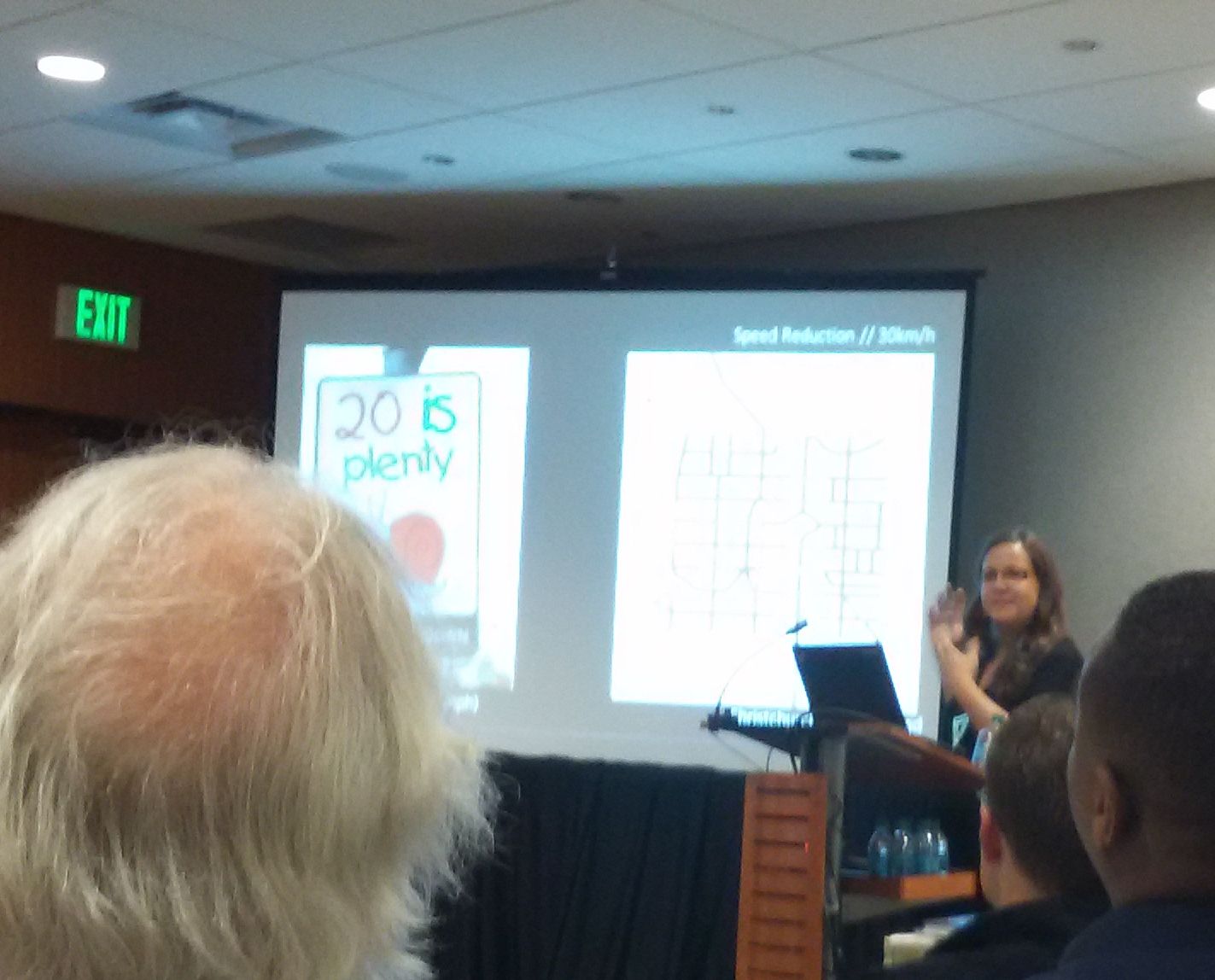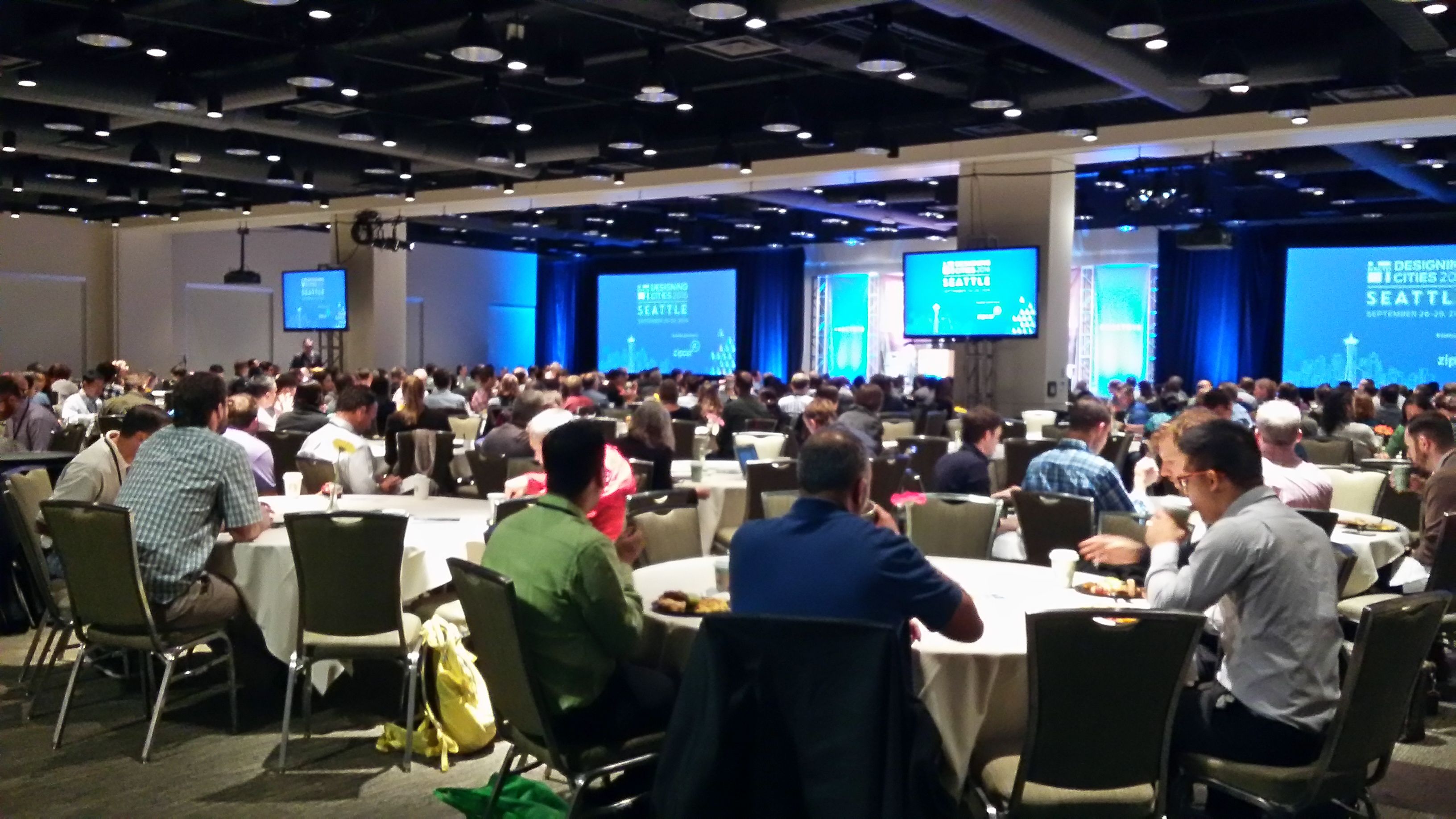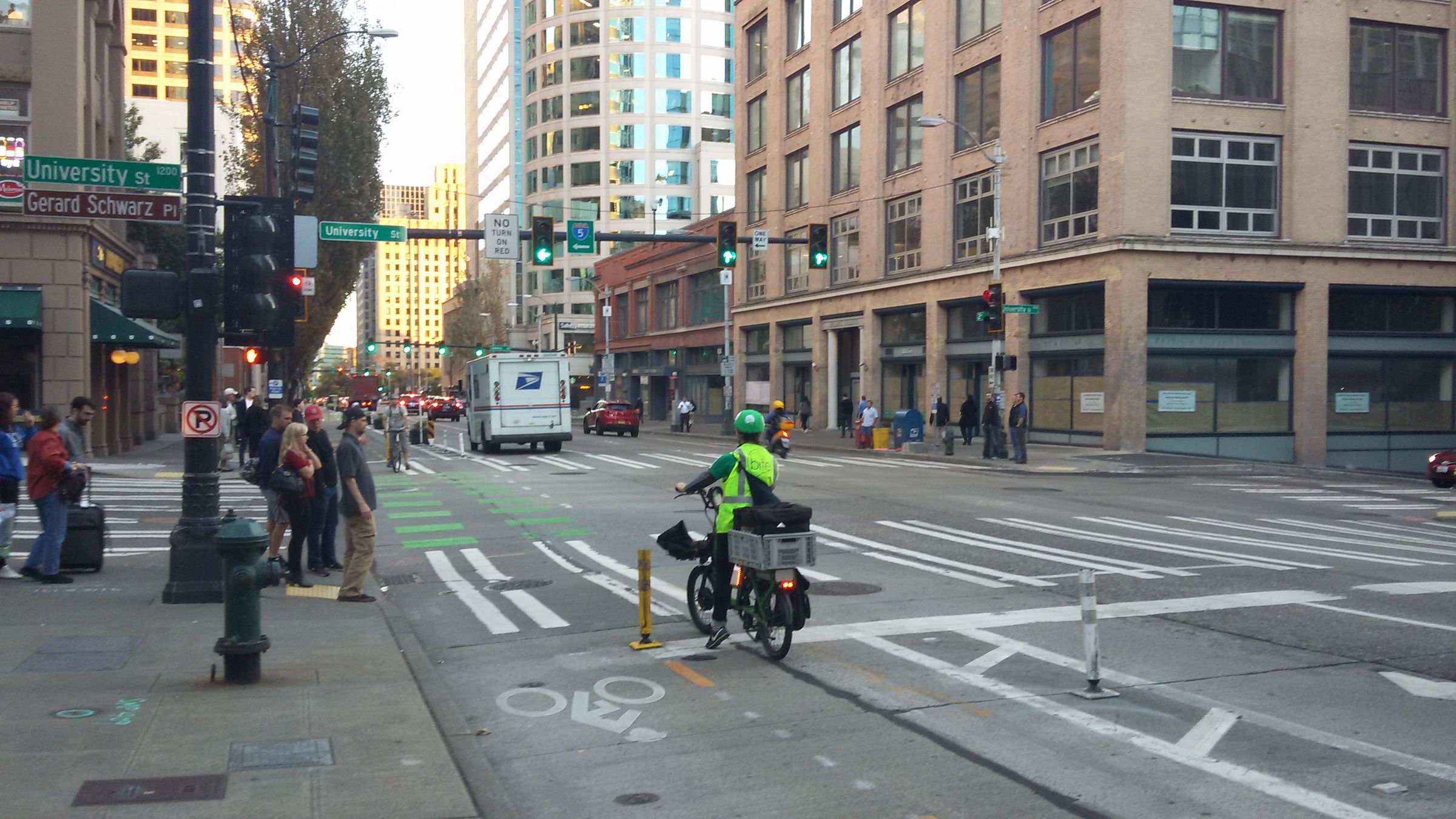The adventure begins in Seattle (after a somewhat sleepless flight) with the NACTO (National Association of City Transport Officials) Designing Cities conference. With over 800 participants, I was expecting everything to be super-sized in comparison to IPENZ Transportation Group conference... I wasn't disappointed on that front, but was also pleasantly surprised with a gentle kick-off. Before the opening plenary I attended a workshop on the new Global Street Design Guide, led by Skye Duncan (a kiwi currently on loan to New York) with three case study presenters - including Kerry Gallagher from Sydney and Ludo Campbell-Reid from Auckland. Plus, the design exercises were scaled in metric units. Although I did manage to draw a couple of bikes on the wrong (i.e. not right) side of the road.

I've had a few geeky engineer fan moments - like being "this close" to Jeanette Sadik-Kahn, actually meeting Roger Geller and happening to sit next to a certain Luciano Rabito, who it turns out managed the new MassDoT guide, which I'd wanted to find out more about and later heard Roger Geller acclaiming it as the best manual for planning and designing separated bike facilities. It's actually pretty exciting putting faces and stories to the names of the people whose reports and manuals I've been studying on the other side of the world.

I tailored my workshop, walkshop and break-out session choices to suit my study focus of mitigating conflict between motor vehicles and people on bikes at signalised intersections with protected bike lanes. Super-size and left/right confusions aside, my general feeling so far is that the challenges faced in North America are very similar to what we're grappling with in New Zealand. There's definitely no silver-bullet for this one - having seen many examples and heard it from others, I'm even more convinced about the necessity for site-specific treatments - but there are a lot of useful tips to be learned (often from those who've made the mistakes already).

Some more general takeaways (the healthy kind) I'd like to share at this point came from a "goldfish bowl" session (i.e. the panel was in a circle surrounded by attendees) entitled "Engineers: Your City's Problem Solvers". The panel was asked "what advice would you give yourself as a young engineer?". Here's my summary of their responses:
- Don't design in a bubble. Know why you're doing what the book tells you to do. Talk to the people who live in the location you're designing for.
- Empathise. Understand what people (end-users, clients and colleagues) really want. Work on networking and inter-personal skills to empathise with the people you work with.
- Go the extra mile to make sure your proposal is water-tight under all scrutiny.
- Get internal support within your agency. Get your "great" ideas properly vetted. Make sure you have the support of your supervisor before you take your project to the client / public / elected officials.
- Know the rules... so you know how and when to break them later on.
- Get involved. Join that committee. Submit comments on documents / proposals.
Some very pertinent advice for me as I continue on this tour.

